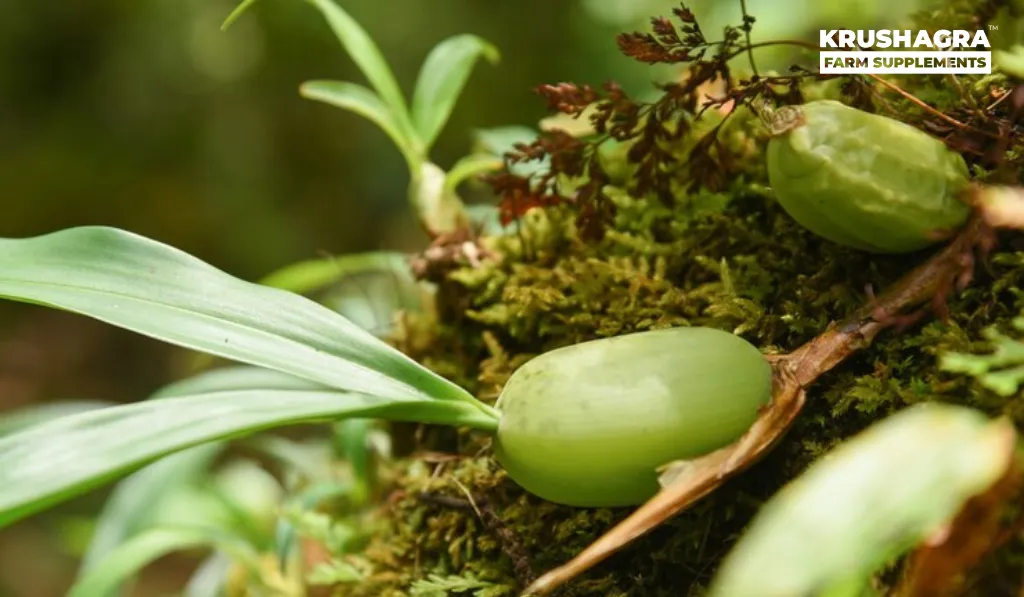Explore how biopesticides revolutionize nematode control in coffee and areca nut production, offering sustainable alternatives to chemical pesticides. Discover the advantages of microbial, botanical, and biochemical agents, alongside insights into nematode biology, field trials, and more.
Introduction:
Nematodes pose a significant threat to coffee and areca nut production, impacting yield and quality. Traditional chemical pesticides have been the go-to solution, but their adverse effects on the environment, human health, and beneficial organisms have raised concerns. In recent years, the adoption of biopesticides has emerged as a sustainable alternative, offering effective nematode control while minimizing harm to the ecosystem. This article explores the benefits of using biopesticides in combating nematodes in coffee and areca nut cultivation.
Understanding the Nematode Challenge:
Nematodes, microscopic roundworms, are notorious pests in coffee and areca nut farms, causing extensive damage to roots, leading to stunted growth, reduced yields, and even plant death. The most common nematode species affecting these crops include root-knot nematodes (Meloidogyne spp.) and burrowing nematodes (Radopholus spp.). Their complex life cycles and ability to thrive in various soil conditions make nematode management a daunting task for farmers.
Biopesticides
Biopesticides represent a sustainable alternative to chemical pesticides, leveraging naturally occurring substances to manage pests. Within the realm of biopesticides, various types exist, including microbial, botanical, and biochemical agents.
Definition and Types of Biopesticides
Biopesticides encompass a range of products derived from natural sources. Microbial biopesticides employ organisms such as bacteria, fungi, and viruses to target pests. Botanical biopesticides utilize plant-derived substances, while biochemical biopesticides rely on naturally occurring compounds like pheromones and enzymes.
- Microbial Biopesticides
Microbial biopesticides consist of living microorganisms, including bacteria, fungi, and viruses. These organisms target specific pests, offering an environmentally friendly approach to pest management. - Botanical Biopesticides
Botanical biopesticides derive from plants and their extracts, utilizing compounds like neem oil or pyrethrins. These substances disrupt pest behavior or physiology, effectively controlling infestations. - Biochemical Biopesticides
Biochemical biopesticides encompass naturally occurring substances like pheromones and hormones. These compounds interfere with pest mating patterns or growth processes, offering targeted control without harming non-target organisms.
Understanding Nematode Infestation in Coffee and Areca Nut Plantations
Nematodes pose a significant threat to coffee and areca nut production, inflicting damage to plant roots and reducing yields. Nematodes, also known as roundworms, exhibit diverse feeding habits and life cycles. Understanding their morphology and behavior is essential for devising control measures.
- Morphology and Life Cycle of Nematodes
Nematodes vary in size and shape, with some species causing more damage than others. Their life cycle typically involves egg, juvenile, and adult stages, with environmental factors influencing development. - Nematode Feeding Habits
Nematodes feed on plant roots, puncturing cell walls and extracting nutrients. This feeding behavior weakens plants, making them susceptible to other stressors and diseases.
Impact of Nematode Infestation on Coffee and Areca Nut Plants
Nematode infestations can devastate coffee and areca nut plantations, leading to reduced yields and economic losses. Additionally, nematode damage can predispose plants to secondary infections, exacerbating the problem.
- Yield Losses and Economic Impact
Nematode-infested plants exhibit stunted growth, yellowing leaves, and reduced productivity. This translates to significant economic losses for farmers, affecting their livelihoods and the overall industry. - Secondary Infections and Crop Vulnerability
Weakened by nematode damage, plants become more susceptible to diseases and other pests. This compounds the initial damage caused by nematodes, further compromising crop health and yield potential.
The Rise of Biopesticides in Nematode Management
Biopesticides offer a promising solution to nematode infestations, providing effective control with minimal environmental impact. Their advantages over chemical alternatives make them increasingly popular among farmers and environmentalists alike.
Advantages of Biopesticides over Chemical Alternatives
Biopesticides offer several advantages over chemical pesticides, including environmental safety, minimal residue, and compatibility with integrated pest management (IPM) practices.
- Environmental Safety and Sustainability
Unlike chemical pesticides, biopesticides pose minimal risk to non-target organisms and ecosystems. They degrade quickly in the environment, reducing contamination of soil and water sources. - Minimal Residue and Human Health Benefits
Biopesticides leave little to no residue on crops, minimizing exposure to harmful chemicals for farmers and consumers. This promotes food safety and reduces health risks associated with pesticide exposure.
Compatibility with Integrated Pest Management (IPM) Practices
Biopesticides complement IPM strategies by integrating cultural, biological, and chemical controls. Their selective mode of action preserves beneficial organisms while targeting specific pests, promoting long-term sustainability.
- Synergy with Cultural and Biological Controls
Integrating biopesticides with cultural practices like crop rotation and biological controls like natural predators enhances overall pest management effectiveness. This holistic approach reduces reliance on chemical inputs and promotes ecosystem balance. - Long-term Sustainability and Resistance Management
By rotating biopesticides with other control methods, farmers can mitigate the risk of pest resistance development. This sustainable approach preserves biopesticide efficacy while reducing environmental impact.
Key Biopesticides for Nematode Control in Coffee and Areca Nut Production
Several biopesticides have shown promise in controlling nematode infestations in coffee and areca nut plantations. Understanding their mechanisms of action and application methods is essential for successful implementation.
Bacillus thuringiensis (Bt)
Bacillus thuringiensis (Bt) is a microbial biopesticide widely used for nematode control. Its mode of action involves producing toxins that selectively target nematodes while sparing beneficial organisms.
- Mechanism of Action and Target Specificity
Bt produces crystal proteins that, when ingested by nematodes, disrupt their digestive system, leading to death. These toxins are highly specific to certain nematode species, reducing the risk to non-target organisms. - Application Methods and Dosage Recommendations
Bt formulations are available in various forms, including liquid concentrates and granules. Application methods range from soil drenching to foliar spraying, with recommended dosages based on nematode population densities.
Neem-based Biopesticides
Neem-based biopesticides utilize compounds derived from the neem tree, such as azadirachtin, to control nematode infestations. These natural substances disrupt nematode growth and development, offering an eco-friendly alternative to chemical nematicides.
- Azadirachtin as a Nematode Growth Regulator
Azadirachtin interferes with nematode development, disrupting molting and reproduction processes. This growth-regulating effect inhibits nematode populations, reducing damage to plant roots and overall crop yield losses. - Formulation and Application Considerations
Neem biopesticides are available in various formulations, including neem oil, neem cake, and neem-based extracts. These formulations can be applied as soil amendments, foliar sprays, or seed treatments, depending on nematode species and crop requirements.
Field Trials and Case Studies on Biopesticide Efficacy
Field trials and case studies provide valuable insights into the efficacy of biopesticides for nematode control in real-world agricultural settings. Comparative studies and farmer testimonials highlight the benefits of biopesticide adoption for sustainable pest management.
Comparative Studies between Biopesticides and Chemical Nematicides
Comparative studies evaluate the efficacy of biopesticides against chemical nematicides in terms of yield improvement, nematode suppression, and economic viability.
- Yield Improvement and Nematode Suppression
Field trials demonstrate the effectiveness of biopesticides in improving crop yields and suppressing nematode populations compared to chemical alternatives. These results underscore the potential of biopesticides for sustainable nematode management. - Economic Analysis and Cost-effectiveness
Economic analyses assess the cost-effectiveness of biopesticides relative to chemical nematicides, considering factors such as input costs, labor requirements, and long-term sustainability. These studies provide valuable insights for farmers considering biopesticide adoption.
Farmer Adoption and Success Stories
Real-life experiences of farmers who have adopted biopesticides for nematode control offer valuable insights into the practical challenges and benefits of this approach.
- Testimonials from Coffee and Areca Nut Growers
Farmers share their experiences with biopesticide use, highlighting improvements in crop health, yield, and profitability. These testimonials serve as compelling evidence of biopesticide efficacy and encourage further adoption. - Challenges Faced and Lessons Learned
Farmers discuss the challenges encountered during biopesticide adoption, such as product availability, application techniques, and regulatory compliance. Insights gained from these experiences inform best practices for sustainable nematode management.
Regulatory Framework and Certification for Biopesticides
Regulatory oversight ensures the safety and efficacy of biopesticides, guiding their development, registration, and use in agricultural settings. Compliance with organic farming standards and consumer awareness initiatives promote responsible biopesticide usage.
Compliance with Organic Farming Standards
Organic certification requirements mandate the use of approved inputs, including biopesticides, in organic farming practices. Compliance with these standards ensures the integrity of organic products and promotes consumer trust.
- Certification Requirements and Process
Obtaining organic certification for biopesticide products involves rigorous testing, documentation, and verification procedures. Compliance with organic farming standards requires adherence to specific guidelines for product formulation, labeling, and usage. - Role of Regulatory Authorities in Monitoring Biopesticide Use
Regulatory agencies oversee the registration, labeling, and distribution of biopesticides to ensure their safety and efficacy. Monitoring programs track biopesticide usage and evaluate their environmental impact, informing regulatory decisions and risk management strategies.
Public Perception and Consumer Awareness
Public perception of biopesticides influences consumer attitudes toward food safety, environmental sustainability, and agricultural practices. Education and outreach initiatives raise awareness of biopesticide benefits and dispel misconceptions about their usage.
- Education and Outreach Initiatives
Educational programs and outreach campaigns inform consumers about the benefits of biopesticides for sustainable agriculture. These initiatives highlight the environmental advantages, health benefits, and regulatory oversight of biopesticide use, fostering consumer trust and confidence. - Addressing Misconceptions and Building Trust
Addressing misconceptions about biopesticides, such as concerns about efficacy, residue levels, and environmental impact, is essential for building trust among consumers and stakeholders. Transparent communication and evidence-based information promote informed decision-making and support for biopesticide adoption.
Future Directions and Innovations in Biopesticide Technology
Ongoing research and innovation in biopesticide technology promise to enhance their efficacy, sustainability, and scalability. Advances in genetic engineering, nanotechnology, and sustainable production methods pave the way for the development of next-generation biopesticides.
Genetic Engineering and Biotechnological Advances
Genetic engineering techniques enable the development of genetically modified biopesticides with enhanced efficacy and target specificity.
- Genetically Modified Biopesticides for Enhanced Efficacy
Genetically engineered biopesticides incorporate genes from naturally occurring organisms to enhance their pesticidal properties. These modified biopesticides offer improved efficacy against target pests while minimizing risks to non-target organisms and the environment. - Nanotechnology in Biopesticide Delivery Systems
Nanotechnology holds promise for enhancing biopesticide delivery systems, enabling targeted delivery of active ingredients to pest populations.
Sustainable Production and Scaling Up
Scaling up biopesticide production requires sustainable cultivation methods, efficient manufacturing processes, and market expansion strategies.
- Cultivation of Biopesticide-Producing Organisms
Sustainable cultivation practices ensure a consistent supply of biopesticide-producing organisms, such as bacteria, fungi, and plants. These practices minimize environmental impact and support long-term biopesticide production. - Market Expansion and Global Outreach
Expanding biopesticide markets worldwide requires collaboration among stakeholders, investment in research and development, and regulatory harmonization efforts.
Challenges and Limitations of Biopesticides in Nematode Management
Despite their many advantages, biopesticides face challenges and limitations that must be addressed to realize their full potential in nematode management.
Shelf-life and Storage Considerations
Biopesticide formulations may have limited shelf-life and require specific storage conditions to maintain efficacy.
- Stability of Biopesticide Formulations under Different Conditions
Environmental factors such as temperature, humidity, and exposure to sunlight can affect the stability of biopesticide formulations. Proper storage and handling are essential to preserve their efficacy over time. - Quality Assurance and Product Integrity
Ensuring the quality and integrity of biopesticide products involves rigorous testing, monitoring, and quality control measures throughout the production and distribution process.
Resistance Development in Target Pests
Prolonged use of biopesticides can lead to the development of resistance in target pest populations, necessitating resistance management strategies.
- Monitoring and Surveillance Strategies
Monitoring pest populations for signs of resistance allows for timely intervention and adjustment of control measures. Surveillance programs track changes in pest susceptibility to biopesticides and inform resistance management decisions. - Rotational Strategies and Integrated Approaches
Integrating biopesticides with other control methods, such as crop rotation, biological controls, and cultural practices, helps delay resistance development and preserve biopesticide efficacy.
Why choose Krushagra?
Krushagra, as the agriculture division of Pratap Tex-Chem Pvt. Ltd, brings forth a suite of biodegradable farm supplements tailored to enhance crop yield sustainably. Among these offerings are Biofertilizers, Biopesticides, and Adjuvants, meticulously crafted to support environmentally friendly farming practices.
In the context of nematode control in coffee and areca nut production, Krushagra’s biopesticides play a pivotal role. By harnessing natural ingredients and innovative formulations, our biopesticides offer targeted nematode control without compromising soil health or ecosystem balance. Through precise application and sustainable management, Krushagra’s biopesticides effectively combat nematode infestations, safeguarding crop health and optimizing yields in coffee and areca nut plantations. With a commitment to sustainable agriculture, Krushagra empowers farmers to mitigate pest pressures while fostering a greener, more resilient farming landscape for generations to come.
Conclusion:
In conclusion, the adoption of biopesticides represents a paradigm shift in nematode management for coffee and areca nut production. By harnessing the power of natural ingredients and innovative formulations, biopesticides offer targeted, environmentally friendly solutions for nematode control. As sustainability becomes increasingly important in agriculture, biopesticides stand out as a promising tool for safeguarding crop productivity while preserving the health of ecosystems and communities.






